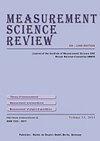基于视觉测量的半导体组装中芯片引脚缺陷自动检测
IF 0.8
4区 工程技术
Q4 INSTRUMENTS & INSTRUMENTATION
引用次数: 2
摘要
摘要随着半导体组装技术的发展,对芯片质量的不断提高,给组装制造过程带来了越来越大的压力。芯片引脚的缺陷大多通过人工检测来验证,这种检测效率低、成本高、可靠性低。在本文中,我们提出了一种视觉测量方法来检测芯片引脚缺陷,如引脚翘曲和塌陷,这些缺陷严重影响芯片组装的质量。该任务是通过提取芯片引脚的角特征、计算双目序列图像中的对应点对以及重建芯片的目标特征来执行的。在拐角特征步骤中,分别引入了使用梯度相关矩阵(GCM)的引脚的拐角检测和使用拟合线的交叉点的芯片封装体表面的特征点提取。在获得相应的点对后,利用特征点重建双目视觉测量系统中的三维坐标信息,并计算引脚的关键几何尺寸,反映芯片引脚的质量是否达标。在芯片数据上对该方法进行了评价,并通过对比实验验证了该方法的有效性。本文章由计算机程序翻译,如有差异,请以英文原文为准。
Automatic Detection of Chip Pin Defect in Semiconductor Assembly Using Vision Measurement
Abstract With the development of semiconductor assembly technology, the continuous requirement for the improvement of chip quality caused an increasing pressure on the assembly manufacturing process. The defects of chip pin had been mostly verified by manual inspection, which has low efficiency, high cost, and low reliability. In this paper, we propose a vision measurement method to detect the chip pin defects, such as the pin warping and collapse that heavily influence the quality of chip assembly. This task is performed by extracting the corner feature of the chip pins, computing the corresponding point pairs in the binocular sequence images, and reconstructing the target features of the chip. In the corner feature step, the corner detection of the pins using the gradient correlation matrices (GCM), and the feature point extraction of the chip package body surface using the crossing points of the fitting lines are introduced, respectively. After obtaining the corresponding point pairs, the feature points are utilized to reconstruct the three dimensional (3D) coordinate information in the binocular vision measurement system, and the key geometry dimension of the pins is computed, which reflects whether the quality of the chip pins is up to the standard. The proposed method is evaluated on the chip data, and the effectiveness is also verified by the comparison experiments.
求助全文
通过发布文献求助,成功后即可免费获取论文全文。
去求助
来源期刊

Measurement Science Review
INSTRUMENTS & INSTRUMENTATION-
CiteScore
2.00
自引率
11.10%
发文量
37
审稿时长
4.8 months
期刊介绍:
- theory of measurement - mathematical processing of measured data - measurement uncertainty minimisation - statistical methods in data evaluation and modelling - measurement as an interdisciplinary activity - measurement science in education - medical imaging methods, image processing - biosignal measurement, processing and analysis - model based biomeasurements - neural networks in biomeasurement - telemeasurement in biomedicine - measurement in nanomedicine - measurement of basic physical quantities - magnetic and electric fields measurements - measurement of geometrical and mechanical quantities - optical measuring methods - electromagnetic compatibility - measurement in material science
 求助内容:
求助内容: 应助结果提醒方式:
应助结果提醒方式:


